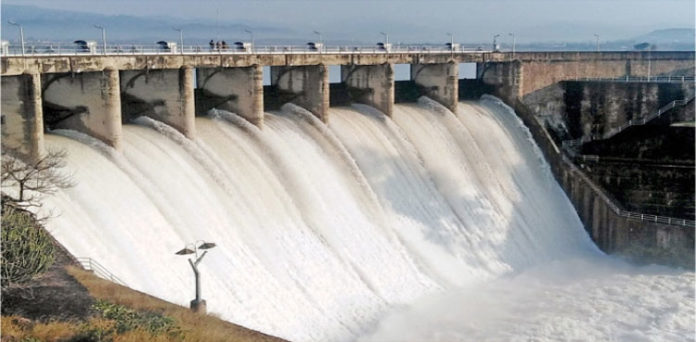The Federal Government has issued an alert to Nigerians about the planned water release from the Lagdo Dam in Cameroon.
The announcement was made through a press statement from the Director General of the Nigeria Hydrological Services Agency (NIHSA), Umar Muhammed, on Tuesday.
According to the statement, Cameroon’s authorities will commence controlled water releases from the Lagdo Dam starting Tuesday, September 17, 2024.
The water discharge is expected to increase progressively over the next week, potentially reaching a flow rate of 1,000 cubic meters per second, depending on the inflow from the upstream Garoua River.
The agency added that while the water discharge will escalate, the release will be gradual to prevent overwhelming the Benue River’s capacity and avoid serious flooding in Nigeria. The discharge will be reduced once the flow into the Lagdo reservoir decreases.
NIHSA emphasized that there is no immediate cause for alarm, as major flooding is not expected. However, the agency advised states along the Benue River—Adamawa, Taraba, Benue, Nasarawa, Kogi, Edo, Delta, Anambra, Bayelsa, Cross River, and Rivers—to stay alert and implement flood preparedness measures.

The statement read, “The Nigeria Hydrological Services Agency wishes to notify the general public that the authorities of the Lagdo Dam in Cameroon have communicated to the agency that they will initiate controlled water releases at a rate of 100m³/s (8,640,000m³/day) starting today, 17 September 2023.
“The water discharge is anticipated to progressively escalate to 1000m³/s over the next seven days based on the inflow from the upstream Garoua River, which serves as the primary source into the reservoir and a significant tributary to the Benue River.
“Nonetheless, the dam operators have indicated that the planned water discharges will be gradual to avoid surpassing the conveyance capacity of the Benue river system and triggering substantial flooding downstream in Nigeria. The overflow from the Lagdo Dam is projected to cease once there is a noticeable reduction in the flow into the Lagdo reservoir.
“The agency unequivocally states that there is no need for alarm as major flooding downstream in Nigeria is not anticipated since the flow levels along the Benue River are still within cautionary limits.
“Nevertheless, it is of utmost importance for all states bordering the Benue River system, namely: Adamawa, Taraba, Benue, Nasarawa, Kogi, Edo, Delta, Anambra, Bayelsa, Cross Rivers, and Rivers, along with the government at all levels (federal, state, and LGAs) to heighten their vigilance and implement appropriate preparedness measures to mitigate potential flooding impacts that may arise due to an increase in flow levels of our major rivers during this period.
“The agency will continue to diligently monitor the flow conditions of the transboundary Benue River and the national inland rivers, and consistently provide regular updates on water levels across major rivers to prevent further flood disasters.”
NIHSA also assured the public that it will continue to closely monitor the water levels in both the transboundary Benue River and Nigeria’s internal rivers, providing regular updates to prevent flood disasters.
The Lagdo Dam, located in Cameroon’s Northern Province, has historically posed flooding risks for several Nigerian states, as it feeds into the Benue River.
In recent weeks, Nigeria has already experienced severe flooding, with Borno State recording over 30 deaths and widespread devastation affecting over a million people.









